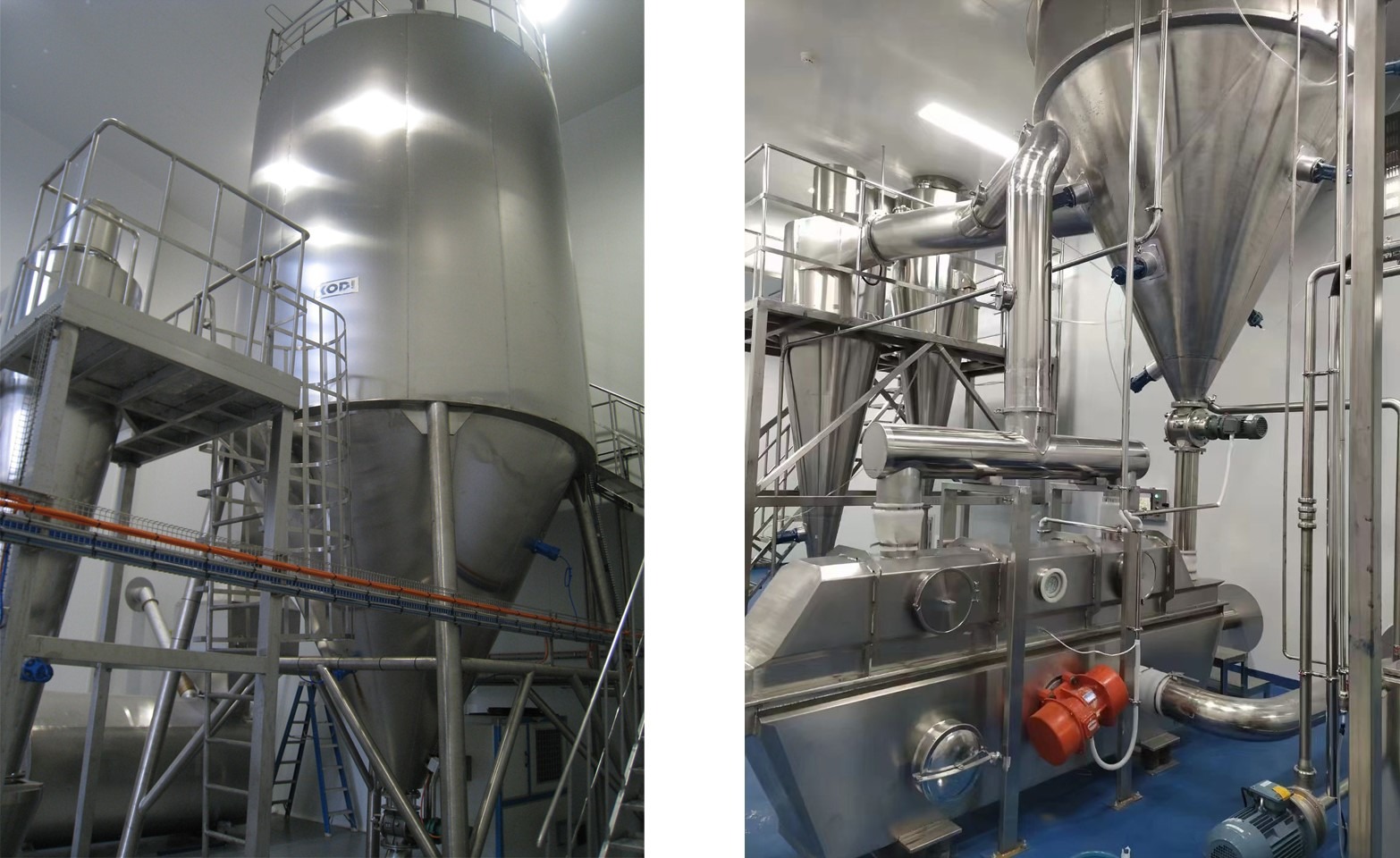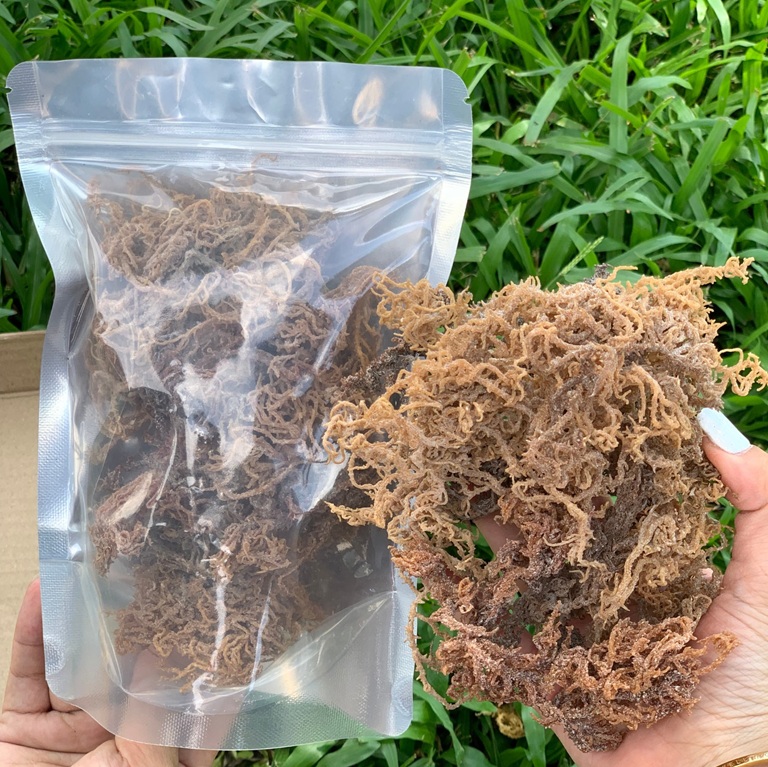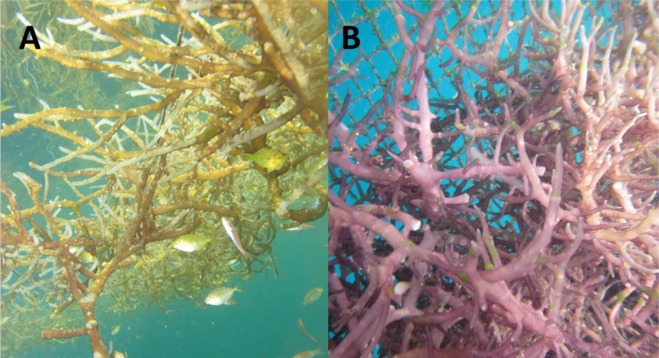Carrageenan grade seaweed plays a pivotal role across industries such as food, pharmaceutical, and cosmetic - where gelling, thickening, and stabilizing functions are essential to product performance. In 2024, the global carrageenan market was valued at around USD 1.0 billion and is projected to grow by over 5% annually through 2033. This robust growth reflects the increasing demand for clean-label, plant-based ingredients across diverse sectors - particularly in dairy products to skincare and drug delivery systems.
However, while demand rises, enterprises face a core challenge: how to source carrageenan grade seaweed that meets industrial standards for both quality and cost efficiency. Fluctuating harvest conditions, varying seaweed species, inconsistent processing methods, and lack of supply chain transparency often lead to unpredictable pricing and quality issues.

Industrial tanks used to mix carrageenan grade seaweed extract into food products, illustrating large-scale production processes.
1. What Is Carrageenan‑Grade Seaweed?
1.1 Definition and standards
Carrageenan grade seaweed refers to red-algae - primarily cultivated for carrageenan extraction - that must meet strict quality criteria. These include:
-
Moisture levels below 12–15%
-
High polysaccharide purity for optimal gel strength
-
Microbial safety for use in food, pharma, and cosmetic products
1.2 Common Species used
The primary species used is Kappaphycus alvarezii, which accounts for approximately 68% of global kappa‑carrageenan output. It offers high carrageenan yield, rapid biomass growth, and excellent gelling properties - making it ideal for industrial carrageenan grade seaweed.
However, another commercially valuable species is Eucheuma denticulatum, which is widely used for producing iota-carrageenan. While it yields a different type of carrageenan, its softer texture and excellent water-binding properties make it suitable for applications in dairy, skincare, and pharmaceutical products.
Lam Hong Sea Moss provides both species, enabling customers to select the right raw material specific product needs.

A technician checks the moisture content of dried seaweed, highlighting the strict quality control standards applied during processing.
1.3 Key quality evaluation criteria
-
Purity: It’s a vital role in determining the usability of carrageenan-grade seaweed for industrial applications. High-purity seaweed is free from sand, salt, and other contaminants that can compromise extraction quality and damage processing equipment. It ensures cleaner gels, stable formulations, and better compliance with international standards.
-
Carrageenan concentration: It is a crucial quality indicator that directly affects extraction efficiency. The higher the concentration, the more carrageenan can be obtained from each kilogram of dried seaweed, reducing production costs and improving yield. Low carrageenan content leads to waste, higher input needs, and inconsistent product quality. For industrial use, especially in food, cosmetics, or pharmaceuticals, this metric is non-negotiable.
-
Moisture content and drying process: Seaweed dried under freshwater conditions can reduce moisture from ~16% to ~10%, improving carrageenan yield by ~14%.
-
Particle size and cleanliness: Uniform size and cleanliness improve hydration and shorten processing times. Dirty, irregularly cut seaweed clogs machinery and reduces extraction efficiency. Suppliers like Lam Hong Sea Moss offer pre-cleaned, size-sorted seaweed that meets industrial expectations..

A side-by-side comparison of Kappaphycus alvarezii and Eucheuma denticulatum
2. Challenges enterprises face when sourcing carrageenan‑grade seaweed
2.1. Price Volatility Due to Seasonal and Regional Factors
Seaweed producers, particularly in Southeast Asia, often face unpredictable price fluctuations. These arise from seasonal changes, extreme weather events, and biological threats such as the "ice-ice" disease that affects Kappaphycus alvarezii. Such volatility complicates budgeting and long-term planning for enterprises relying on stable input costs.
2.2. Inconsistent Quality from Unverified Suppliers
Sourcing from suppliers lacking proper traceability or certification exposes enterprises to inconsistent product quality. Batches may vary in carrageenan content, exhibit high moisture levels, or contain microbial contaminants—resulting in poor extraction efficiency and compromised product safety.
2.3. Lack of Supply Chain Transparency
Many small or unregulated suppliers fail to provide documentation on harvest methods, processing conditions, or even the species used. This lack of transparency increases the risk of receiving substandard or adulterated raw materials, which can disrupt production and damage brand reputation.
2.4. Absence of Certifications
Wild-harvested or informally sourced seaweed often lacks crucial certifications such as COA (Certificate of Analysis), HACCP, or ISO standards. Without these, enterprises may face regulatory hurdles, delays in production, or even product recalls—especially in food, pharmaceutical, and cosmetic markets where compliance is non-negotiable.
3. How to identify high-quality carrageenan‑grade seaweed?
The key lies in evaluating three core areas:
✅ Verified Species
Using Kappaphycus alvarezii ensures consistent yield and gel strength. Mixed or unverified species introduce variability that disrupts processing and product performance. Buyers should always confirm the botanical identity before large-scale procurement.
✅ Lab-Tested Quality Metrics
Look for test results covering carrageenan content, moisture level, microbial load, and heavy metals. These metrics are essential to predict extraction efficiency, product stability, and safety. Regular testing enables informed sourcing and quality control at every stage.
✅ Certifications
Certifications such as COA, HACCP, ISO 9001/22000, and organic labels ensure safety, traceability, and regulatory compliance. Suppliers with these credentials demonstrate a clear commitment to consistent quality.

A worker is drying Kappaphycus alvarezii in the sun.
4. How to find seaweed that is both affordable and high‑quality?
4.1. Partner with certified, reputable suppliers
Work with suppliers that provide organic carrageenan grade seaweed with full documentation - including COA, HACCP, ISO, and organic certifications. These partners reduce variability and mitigate risks related to contamination, inconsistent carrageenan yield, and regulatory non-compliance.
4.2. Secure pricing through long-term contracts and bulk procurement
Establishing fixed agreements for farmed carrageenan-grade seaweed helps lock in prices, ensure volume stability, and protect against seasonal market fluctuations. Bulk purchasing also strengthens supplier relationships and may unlock additional discounts or service benefits.
4.3. Compare regional offers base on seasonal dynamics
Regularly evaluate market offers from major producing countries such as Vietnam, Indonesia, and the Philippines. Seasonal trends and harvest cycles in these regions can impact pricing and availability. Strategic timing enables enterprises to source competitively without compromising on quality.
4.4. Conduct pre-bath sample testing and lab verification
Before placing large orders, always request samples and perform lab testing to verify carrageenan content, moisture levels, and microbial safety. Rely on certified third-party laboratories to confirm that the raw material meets your production requirements and complies with international standards.
4.5. Look beyond the lowest price
Don’t base decisions solely on cost. Evaluate suppliers based on logistics efficiency, delivery lead times, technical support, warranty terms, and after-sales service. In many cases, a slightly higher upfront price can result in lower total cost of ownership through improved reliability and performance.
5. Why choose Lam Hong Sea Moss as your trusted seaweed partner?
We understand that to truly support a business's growth, a raw material supplier must ensure consistent quality in every shipment. No amount of marketing can compensate for substandard products. If your company is currently seeking carrageenan-grade seaweed, we invite you to consider Lam Hong Sea Moss, a trusted supplier worth exploring. With the advantage of harvesting and processing directly in Vietnam, we leverage the country’s unique climate and cost-effective labor to deliver high-quality seaweed at competitive prices. Contact Lam Hong Sea Moss today and experience the difference for yourself.






